Do you love the colorful Caladiums? Learn How to Grow Heart of Jesus Plant easily and multiply them without any fuss!
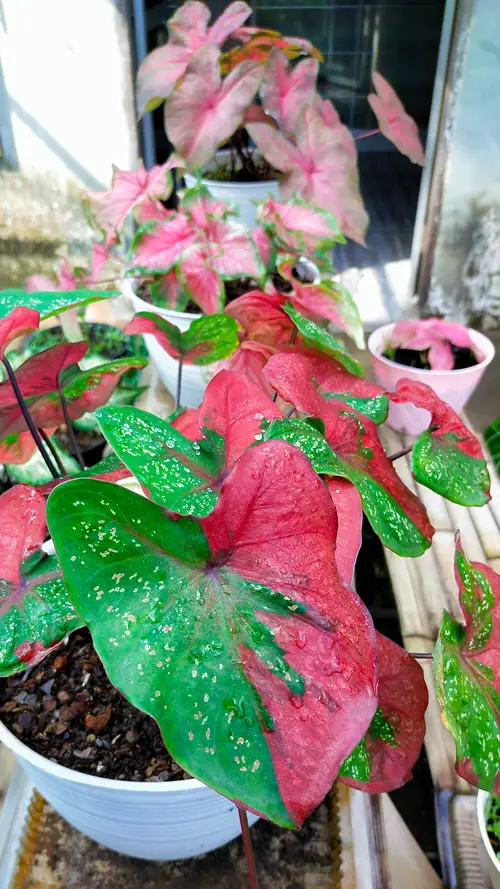
Caladium is one of the most sought-after ornamental plants thanks to its vivid foliage and ease of growing nature. Learn How to Grow Heart of Jesus Plant and all about taking its right care.
Here are the most stunning types of caladiums you can grow
What is Heart of Jesus Plant?
Caladiums are also called the Heart of Jesus, thanks to their heart-shaped leaves. The plant comes in brilliant shades and does remarkably well as a houseplant. Depending on the variety, it performs well in the shade to bright, indirect light.
Propagating Heart of Jesus Plant
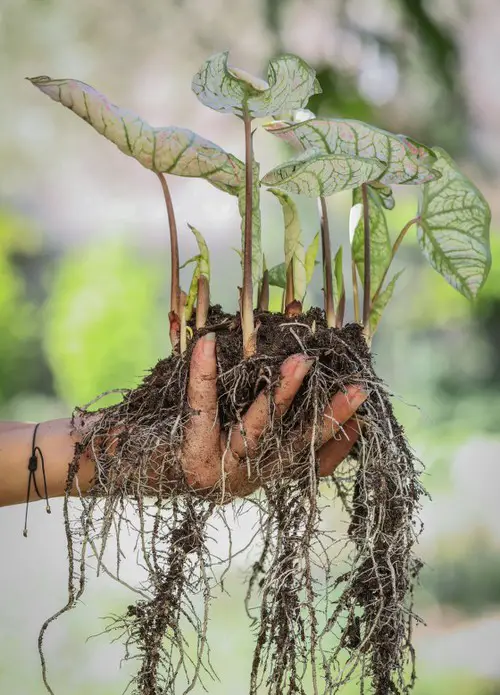
The best way to propagate this houseplant is via division. Do wear gloves as it has calcium oxalate crystals.
- Water the plant well, 24 hours before taking the divisions. It will also lower down the risk of transplant shock.
- Take out the entire plant from the pot. Do make sure that you are doing it carefully and not damaging the roots in the process.
- Using a sharp knife, take out the tuberous offsets or divisions with healthy roots attached to them.
- Transplant the divisions into new pots filled with a fresh potting mix. Keep it in an area where it gets bright, indirect light. An east-facing window would be an ideal spot.
Requirements for Growing Heart of Jesus Plant
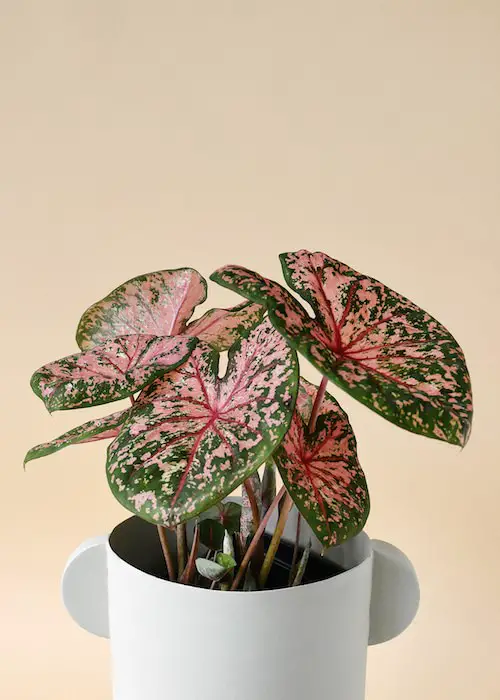
Location
Intense and direct sunlight can be harmful to the Heart of Jesus—place the container at a location that receives part shade with diffused sunlight. Rotating the plant every week will ensure that it gets a uniform exposure.
A bright window that receives 2-3 hours of morning sunlight would be the best location.
Soil
The Heart of Jesus plant does well in a well-draining growing medium. You can also use a soil mix that’s specially formulated for houseplants. If you are using garden soil, amend it with finely ground bark or manure to improve drainage.
Watering
In its growing season, the Heart of Jesus plant would need regular watering and evenly moist soil. The best method to follow is to let the topsoil dry out a bit before watering the plant again.
Unnecessary watering may cause root rot or yellowing of leaves. Also, underwatering may cause wilting, no growth, leaf tips turning brown, and greying.
Humidity
This plant thrives best in moist and bright environments, and the average room level of humidity would not be sufficient for Caladiums. Place the pot on a pebble tray, or you can use a humidifier, too.
Temperature
The best range of temperature that would support this plant’s growth is 10-30 C, or 50-86 F. Make sure that the plant is not exposed to sudden temperature changes nor exposed to harsh afternoon sun for a long duration. Also, keep it away from heating and AC vents.
Taking Care of Heart of Jesus Plant
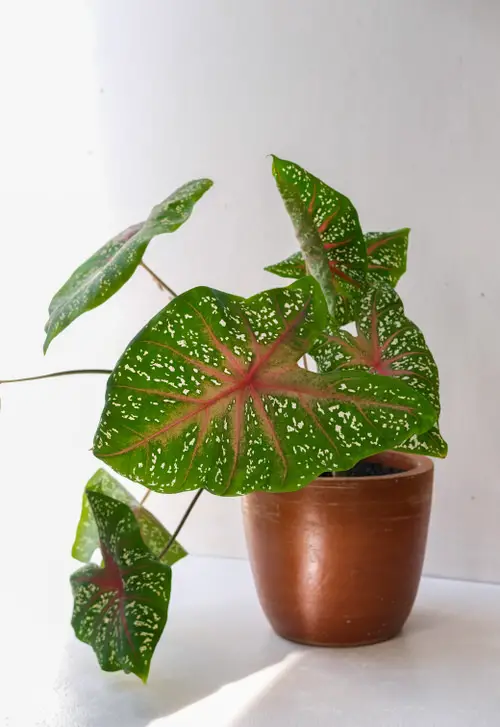
Fertilizer
The plant will appreciate a feed of water-soluble, balanced fertilizer once a month. Do follow the recommendation on the label for the correct dose. Alternatively, you can also use a 5-10-10 fertilizer during the growing period.
Pests and Diseases
Watch out for aphids, scale, mealybugs, spider mites, and thrips. They can be handpicked, or you can knock them off using an insecticidal soap or a neem oil solution.
To keep most potential diseases at bay, make sure that you follow the right watering schedule, and never letting the soil go too wet or dry.
Growing Heart of Jesus Plant in Water
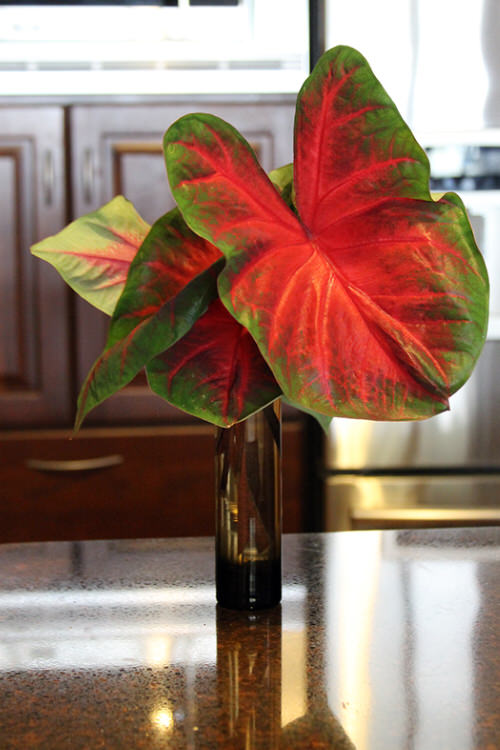
Growing caladiums in water is a super-easy way to showcase their beauty in tall vases and jars. Just make sure to change the water every 5-7 days or earlier if it turns discolored. Keep the plant where it receives partial to full shade.
We have a detailed article on growing caladiums in the water here
Toxicity
The Heart of Jesus plant is categorized as mildly toxic because of calcium oxalate crystals. If ingested, it can cause nausea, vomiting, and loss of appetite. It is best to keep the plant away from the reach of children and pets.


